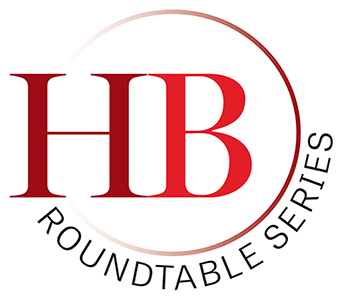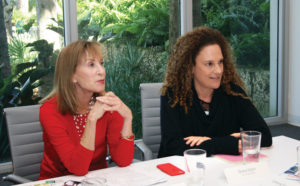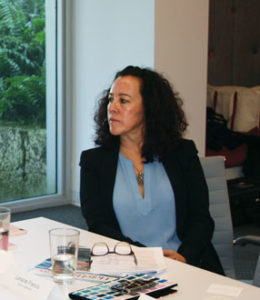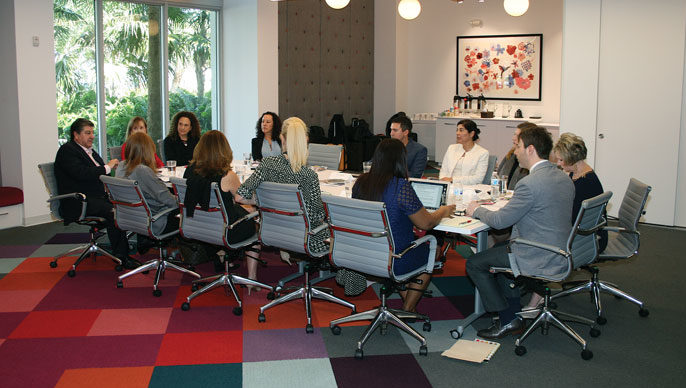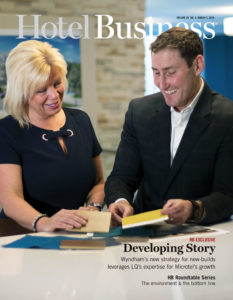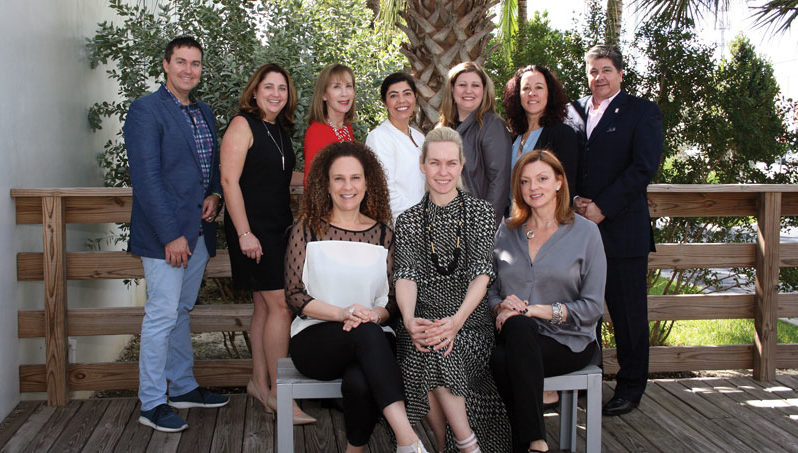
STANDING, LEFT TO RIGHT: Chris Kearney, EXP; Jennifer Chesek, Beyer-Brown & Associates; Linda Hein, The Parker Company; Liliane Moura, Benjamin West; Amy Hulbert, Best Western Hotels & Resorts; Lorraine Francis, Cadiz Collaboration; and Walter Barela,
Peak Hospitality
SITTING, LEFT TO RIGHT: Diana Dobin, Valley Forge Fabrics; Siobhan Barry, Gensler; and Amy Jakubowski, Wilson Associates
FT. LAUDERDALE, FL—In hospitality, in order to have a profitable business, everyone involved must have a responsibility to the bottom line. As inhabitants of this planet, we also have a responsibility to the environment. The question is: Can the two coexist?
The Hotel Business Executive Roundtable, “Balancing the Green: The Environment & The Bottom Line,” hosted and sponsored by Valley Forge Fabrics Inc., brought together hospitality experts to explore this question and others related to sustainability. Panelists offered a variety of opinions at the roundtable, co-moderated by Hotel Business Editor-in-Chief Christina Trauthwein and Publisher Allen Rolleri.
“From our perspective, we have very few projects that focus on sustainability,” said Linda Hein, SVP of training and development, The Parker Company, a hospitality procurement services company. “It is like a collision of cost versus sustainability. The budget always wins out… In FF&E, which we purchase most often, it just doesn’t happen—maybe a couple of projects. We are doing more than 100 projects right now, and maybe two have an emphasis on that.”
Hein added that there were a few projects where the company was asked to send questionnaires to vendors to help achieve LEED certification.
Lorraine Francis, design principal, Cadiz Collaboration, a California-based architecture and design firm, estimated that a project achieving LEED Platinum costs between 7-11% more to build. She pointed to laws in her home state that mandate sustainable projects. “If you look at CalGreen [the California Green Building Standards Code], it really is almost certified building without getting the certification because they are leading states in terms of energy, conservation, lighting and mechanical,” she said. “We are really taking a lead with that.”
Chris Kearney, VP of engineering firm EXP, agreed that California is ahead when it comes to sustainability. “Codes are starting to drive us to be more efficient, and the West Coast is further ahead,” he said. “As you start moving east, it gets less and less efficient. Someday, we are going to get there, but California is leading it. ASHRAE [the American Society of Heating, Refrigerating and Air-Conditioning Engineers]is another organization that is trying to lead this whole energy-efficiency movement, but we’re way behind in the industry.”
Kearney added, “If you look around different industries, office buildings and apartments being two big ones, they are LEED-certified all over. You don’t build a new apartment building without it being LEED- or Green Globe-certified. You don’t build a new office building without it being LEED or LEED Platinum. Why is that not important to hotel guests? It is important to renters, it is important to office spaces, to employees working for companies, but for some reason, we don’t seem to demand it as a hotel guest.”
What will help sustainability become more prevalent in hospitality projects is to bring all of the players in as early as possible. “We are all different aspects of a project, so I think every one of us wants to be in the game earlier,” said Hein. “From a purchasing standpoint, because we are the keepers of the money, keepers of the budget, we have to make sure the owner’s money is spent wisely; if we are brought in at the beginning, instead of at the end of the food chain—it is getting better—we could have more of an opportunity to manipulate the budget so more of this green can be included.”
Francis agreed. “Part of the issue is the process,” she said. “How we design is very linear, so we have the planners on board, the architects on board. I have done work with Bill Reed, who is one of the founding members of the U.S. Green Building Council (USGBC), and he is really into regenerative thinking… How do you get NEP on earlier, because all of a sudden, if you get them on earlier, we can actually decrease the whole system and the sizing of the system to work better.”
Siobhan Barry, design director for hospitality, Gensler, believes that there needs to be more companies leading the sustainability movement. “No one is owning it, and we are all looking around,” she said.
Some of the other participants felt that there is an opportunity for companies in the hospitality industry to be those leaders.
“We have a huge opportunity,” said Amy Hulbert, VP of upscale and boutique brands, Best Western Hotels & Resorts. “We have an opportunity to get that message out, and we have social media platforms that are great for that.”
“Why aren’t we doing a better job of that?” asked Amy Jakubowski, client relationship director for the Americas/design director, Wilson Associates “… Why are we not messaging this? Because the minute you tell people, they are going to feel guilty not doing it either, so you could almost guilt the entire world into it.”
Jennifer Chesek, VP of hospitality and senior living, Beyer-Brown & Associates, agreed. “We talk about communication and getting the message out there—maybe not so much from our end, but really from the guest side,” she said. “It has to grow with them, word-of-mouth and them telling friends, them going back to the hotel.”
Rolleri asked the participants if the guests are leading the demand for sustainability.
For Walter Barela, principal, Peak Hospitality, the guests are driving it, but they may not even know it. “Guests are more savvy, and they do like to feel good about where they stay,” he said. “For us, it is a lot of educating them. One of the earlier hotels where we did sustainability—about 15 years ago—used recycled money as the countertop for the front desk and had a sign that said $2 billion went into construction for this desk with a little blurb explaining that this was a recycled product and going on with what we do.”
He continued, “Some things you are really afraid to do as an operator. For instance, our hotel in Tombstone, AZ, because it is on a septic system, we went to a two-ply toilet paper. Quite honestly, a two-ply toilet paper is good for the environment because of how quickly it breaks down. We are scared to do it in the rest of the hotels without some sort of education for the guests saying, ‘We’re not just being cheap giving you two-ply toilet paper. This is really much better for the environment.’”
Hulbert said that telling guests the story of the brand’s sustainable initiatives will help them understand and feel better about their stay. “We are using pump dispensers in our bathrooms—think about all the waste that happens with the bottles,” she said. “Where we do use the bottles, we have a relationship with Clean the World. They collect them, they sanitize everything. It started with a man in his garage with a potato peeler and bars of soap from hotels. That is not only saving the products going into the landfill, but it is also saving children worldwide.”
She continued, “You think about those kind of impacts, and that’s what gets people warm to the idea of sustainability and taking it to the next level with the product. All of these things together start to build what the operational model is… It is getting warm about all of that so that it can be more integrated, and then people say, ‘I can see what this is going to do, and I can see the good.’ Then, they are open to more products being incorporated.”
Getting that message out to guests is important, according to Barela. “Our job, as a hotelier, is to tell you what you are doing that is good for the environment and why you are lessening your footprint by staying with us,” he said. “People want to do the right thing so long as it doesn’t inconvenience them. If you lay it out to them and all of a sudden these little things start to add up, guess what? They will search out your product next time.”
Liliane Moura, VP of business development with purchasing firm Benjamin West, thinks that the hospitality industry has the power to really make a difference when it comes to sustainability—and to make it the norm. “If you look at our industry and how global it really is, [think about]how much we could actually affect if we start talking about it on a grand scale, versus ‘don’t wash this towel, reuse it,’” she said. “Look at what is happening with the [plastic]straw. Everybody is talking about the straw. Look at the power we have that we can educate everybody who touches a hotel. It’s fascinating to me the power the industry has and what we can do.”
Hulbert said that Best Western is looking to set an example with the plans for two of its first-ever wholly owned properties. “As we look at the systems in the building, we are being really cautious about what we specify because we want to be a great example all the way across the board when we take developers through that hotel,” she said. “We want to showcase what a responsible design looks like. It works better in the room anyway, it works better for the guest, so it is better all the way around, but it is going to cost us a little bit more; we know that going into this, but we also don’t intend to flip these hotels. We intend to hold them for a while. We hope to lead by example and have those to showcase to our developers as we take them through our new product.”
The participants agreed that a good way to get guests interested in sustainability is to tie it in with wellness.
“Wellness is built on sustainability,” said Jakubowski. “It is the next step upward. You have already got the platform of sustainability, and then there is wellness that you are using.”
“It sounds like, from an owner’s perspective, for you, the sustainability piece matters because it can save you money and energy, but maybe for the guest, sustainability doesn’t necessarily sell rooms, but health does,” said Diana Dobin, president/chief sustainability officer, Valley Forge Fabrics. “It is knowing the story to tell and how to tell that story.”
She continued, “For us, as a company, sustainability intersects with human health. If there is not an intersection, it doesn’t make sense for us as a company, and that has always been our philosophy. We make linens from eucalyptus and other botanical woods. The process to create the product is less pressure on the environment. There is less water, there is less energy. There is less waste in the actual process, but the result is when you are actually using the product, and actually sleeping in the product, that you sleep better because it keeps you cooler and it helps people with sinusitis or any kind of asthma because dust mites don’t like the eucalyptus sheets. There is this deep connection with human wellness and sustainability.”
For Kearney, sustainability and wellness must go hand in hand. “I think there is a story there because it is the right thing to do,” he said. “That is the key because if we don’t figure out the sustainability piece, there won’t be any wellness. Our grandchildrens’ children won’t have wellness because we don’t take care of our environment. We are destroying the environment. That’s the key. It’s the right thing to do.” HB
Watch video coverage at video.hotelbusiness.com
Hilton’s Eskanazi on green initiatives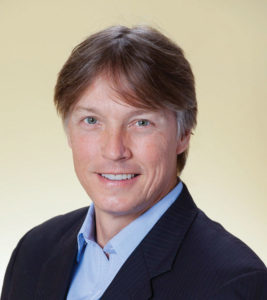
Leo Eskenazi, Hilton’s senior director of design for Latin America and Caribbean, was originally scheduled to participate in the roundtable, but because of unforeseen circumstances, he was unable to attend the morning discussion. Here, he offers his take on sustainability in the industry.
Can a focus on sustainability and maximizing profit coexist? Absolutely, sustainability is a great investment. It is very important today and necessary for the survival of our business and our planet as we form an integral part of communities around the world. The perspective should be about maximizing profitability in the long term so the investments we are making today in sustainability have a continuous positive impact on our business and communities.
We are working to reduce our impact across our value chain to preserve our planet for future generations. We invest in sustainable travel and tourism to ensure that our planet remains a source of discovery, development and growth for our guests, communities, team members and owners. We have implemented LightStay, our award-winning corporate responsibility performance measurement platform, to manage and report our environmental and social impact across our global portfolio of nearly 5,300 hotels. Since LightStay’s launch, we are proud to have saved more than $1 billion by operating sustainably and carefully managing our energy, carbon, water and waste. LightStay enables us to drive efficiencies and continuous improvement across our portfolio, providing value for our owners, a better experience for our guests and a lighter environmental impact in our local communities.
Are today’s guests driving a push for sustainable offerings? We have certainly seen increased awareness in our guests about sustainability and social responsibility. They want to know what Hilton is doing to support the environment and how our business impacts the lives of the people working in our hotels and their communities. Our guests appreciate and support our global initiatives for sustainability and social responsibility, and they also play an active role when staying at our hotels. The travelers are making more conscious choices when planning travel. Climate change and globalization have made travelers more aware of the importance of sustainability and has influenced their preference and choice when selecting hotels.
Wellness is a huge movement—and investment—for the industry right now. Is there an opportunity to link sustainability with wellness, to piggyback on that trend, so to speak, to move the needle on sustainability initiatives? Wellness travel represents about 17% of total tourism expenditures. This movement is related to the greater concept of well-being, which ties directly to sustainability. This is all about personal connections between body, mind and soul and the world we live in. Our wellness programs focus on developing unique environments and delivering great experiences to our guests that help each one connect to the essential beautiful balance of nature.
Green initiatives, programs and services are more obvious than green products. How do you increase awareness of the products used? We are very proud of our sustainability and social responsibility programs, and we make our team members and guests aware and an active part of it. We are increasingly identifying and providing information about the products used in our hotels that support our programs. This includes references about energy consumption and carbon emissions reduction, water consumption reduction, waste reduction and recycling, and responsible sourcing. Our guests and team members appreciate this information; they embrace our initiatives.
Sustainable takeaways
Co-moderator Christina Trauthwein, editor-in-chief of Hotel Business, asked the participants for their final takeaways from the roundtable.
Diana Dobin, president/chief sustainability officer, Valley Forge Fabrics: “We wanted to pull all of you together because we really wanted your feedback so we can continue to invest in the right areas within our products. From what I’m hearing, the designers at the table have said, ‘Yes, please keep investing in your sustainable products…’ I still feel like you are saying continue to push it because it is not over yet and we just have to keep fighting the battle.”
Amy Hulbert, VP of upscale and boutique brands, Best Western: “There were a lot of great ideas. We have a ways to go, but I think we have a good start, and if we can build upon what we have already started with, and also leverage the things that really matter to guests and are palatable for developers, then we can make at least a good first step. Then, it is about educating people and making sure that the customers and the developers understand what the options are, that we can make a difference as an industry.”
Liliane Moura, VP of business development, Benjamin West: “It always goes back to education. I think we all have a part of it… That is a conversation I would like to have more of and understand better. I do think that, at the end of the day, we have a lot of power as an industry. We have an influence, and we touch so many people. I don’t care when you tell them, tell them after so they can feel good, but I do think that we’re not doing enough yet. I get excited when we restart the conversation because I think that it is so needed.”
Chris Kearney, VP, EXP: “When I do presentations about sustainability, I always like to use a quote from Dr. Seuss’ The Lorax—‘Unless someone like you cares a whole awful lot, nothing is going to get better. It’s not.’ I think all of us have to show that we care, otherwise, it is not going to get better. We are going to continue with more polar vortexes, global warming and climate change, unless we all start to care and push it. I don’t think it has to be about payback, it has to do with doing the right thing.”
Lorraine Francis, design principal, Cadiz Collaboration: “I think what is going to move us forward is technology. If you look at the Internet of Things (IoT), artificial intelligence (AI) and data, wireless devices are going to get a Iot cheaper to put in, but how are you using that data? So that data analysis and understanding guests better will help us on energy and conservation moving forward.”
Linda Hein, SVP of training and development, The Parker Company: “I’m going to go back to my company and have a conversation: When we have a new project, we should be a little more proactive in asking the questions about sustainability at the beginning when we meet with the client—we should bring it up—instead of just being a passive actor in the whole project and waiting for someone to say, ‘We don’t want it’ or ‘We can’t afford it.’ We should bring it up right up front and try to get them to think a little differently. We don’t do that now at all.”
Walter Barela, principal, Peak Hospitality: “Passion is infectious, so if you believe, I will believe, and if you dumb it down for me, and you bring me the specifics, you give me an option to choose. We can have passion and say it is the right thing to do, but it is easy to say that with someone else’s money. I don’t always have that benefit either because I have to go back to my investors…but if I sell them on the story—and by the way, bankers do the same thing, they aren’t lending on the product, they are lending on the story—if you tell the story correctly, people will bite. Passion is going to drive things.”
Amy Jakubowski, client relationship director for the Americas/design director, Wilson Associates: “Don’t give up. Don’t give up the conversation. Keep pushing it forward. It is what we do—we shape the human experience, and the human experience is about health and well-being. As we look at this, guests will make money or will do this, will make it sustainable, but what are we leaving behind for our children and grandchildren? We have to care about that, and I think that trumps money in some way. We just have to figure out how to do it more effectively.”
Jennifer Chesek, VP of hospitality and senior living, Beyer-Brown & Associates: “Just give it time. We are definitely seeing it come back forward and…that conversation has to continue with the guests and customers using the hotels.”
Siobhan Barry, design director for hospitality, Gensler: “When you invited me to join the panel, I was thinking, ‘This is going to be really interesting.’ We’re all really kind of passing the buck and pointing fingers and I think the thing that I came out with today, mostly from this table…is inspiration. You need that yourself to take leadership and stop waiting for someone to lead for you. I think we are all saying that. We are saying it with passion, and you are talking about action. How do you turn all this into action and inspiration to go back and change your actions with your clients, with your owners, with your team, who are looking to you to say what your standard and process is? How do we put that into action? It’s not waiting for anyone else. We have to go do it.”

